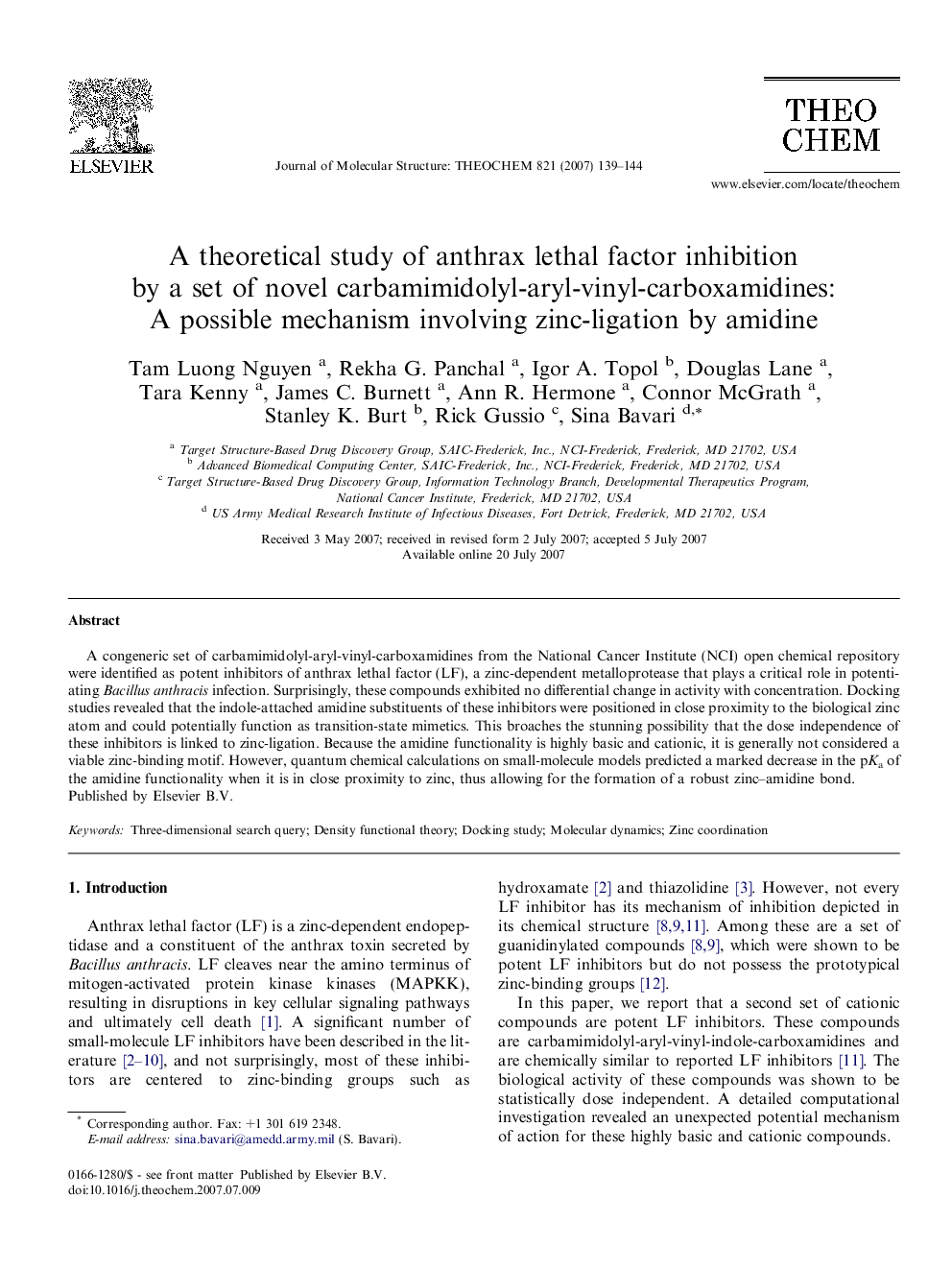| Article ID | Journal | Published Year | Pages | File Type |
|---|---|---|---|---|
| 5417783 | Journal of Molecular Structure: THEOCHEM | 2007 | 6 Pages |
Abstract
A congeneric set of carbamimidolyl-aryl-vinyl-carboxamidines from the National Cancer Institute (NCI) open chemical repository were identified as potent inhibitors of anthrax lethal factor (LF), a zinc-dependent metalloprotease that plays a critical role in potentiating Bacillus anthracis infection. Surprisingly, these compounds exhibited no differential change in activity with concentration. Docking studies revealed that the indole-attached amidine substituents of these inhibitors were positioned in close proximity to the biological zinc atom and could potentially function as transition-state mimetics. This broaches the stunning possibility that the dose independence of these inhibitors is linked to zinc-ligation. Because the amidine functionality is highly basic and cationic, it is generally not considered a viable zinc-binding motif. However, quantum chemical calculations on small-molecule models predicted a marked decrease in the pKa of the amidine functionality when it is in close proximity to zinc, thus allowing for the formation of a robust zinc-amidine bond.
Related Topics
Physical Sciences and Engineering
Chemistry
Physical and Theoretical Chemistry
Authors
Tam Luong Nguyen, Rekha G. Panchal, Igor A. Topol, Douglas Lane, Tara Kenny, James C. Burnett, Ann R. Hermone, Connor McGrath, Stanley K. Burt, Rick Gussio, Sina Bavari,
